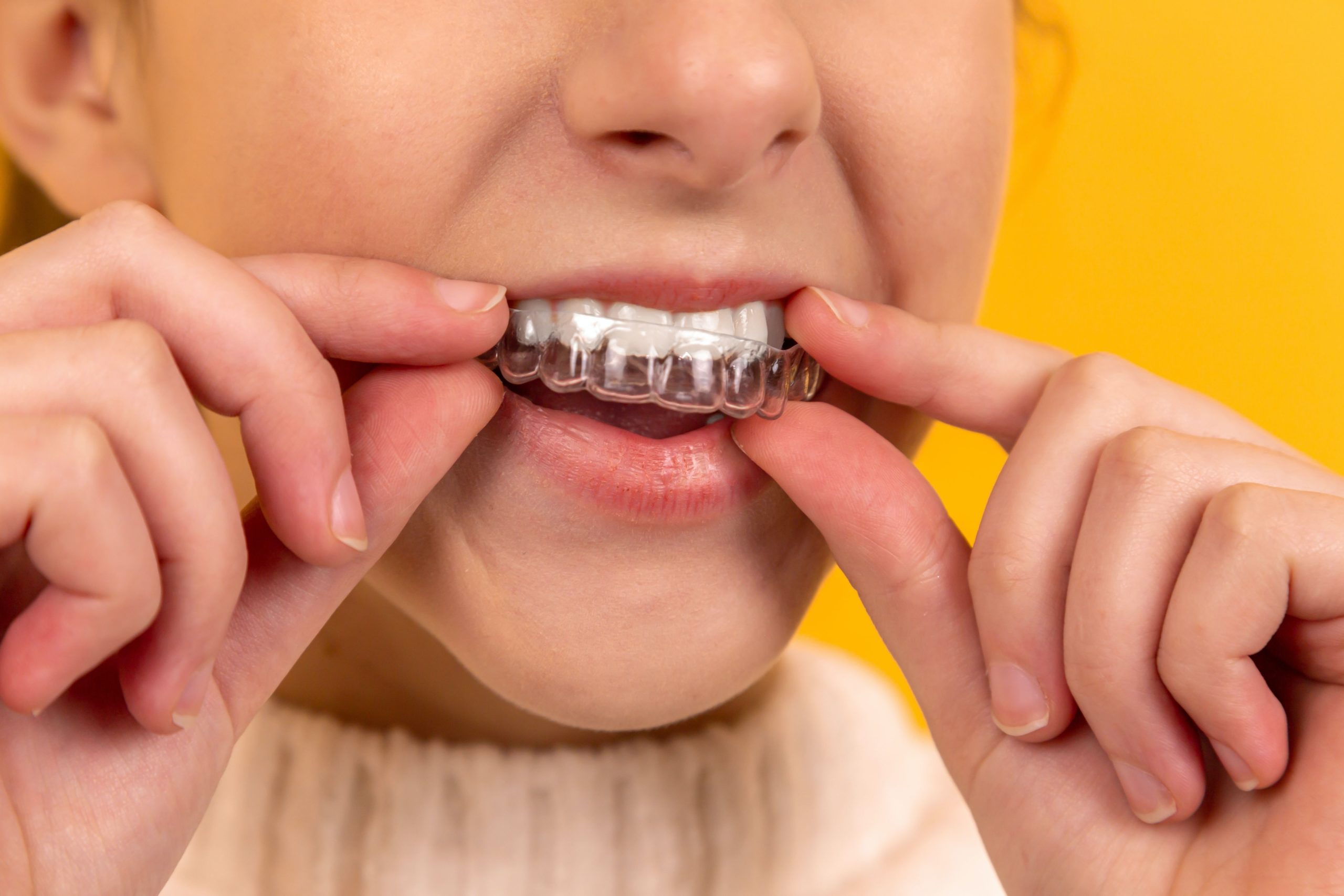Interested in Orthodontic treatment? What is the preferred type of braces? ClearLine Braces that you can hardly see, or Traditional Braces? Questions arise when considering which method to use. Consider the complexity of your case, your age and your lifestyle.
Investigating some key questions will facilitate valuable conversations with your dentist.
What material are braces?
Traditional Braces use metal brackets attached to the outside of your teeth. Ceramic and lingual(tongue side of teeth) brackets are versions of this more traditional method. Attaching necessary metal wires and elastics to the brackets move your teeth as required.
ClearLine braces (Invisalign-type) are clear plastic custom-made trays based on patient impressions or scans. Teeth gradually move in small increments as a tray is worn for a specific period of time.
Advantages of Clearline
- Virtually Invisible. Invisible ClearLine aligners are great for adults and teens who do not want to be reminded by others of their orthodontic treatment. You don’t have to worry about braces showing in photos. You only see the progress of your ortho treatment.
- Removable to Eat. As aligners are removed while eating, one is able to keep teeth clean through brushing and flossing. Wearing liners 20-22 hours/day is recommended. Changing what you eat, as you sometimes do with traditional braces, is unnecessary. There are no worries with hard or chewy foods.
- Fewer Appointments are necessary. As the patient receives a set of trays, monthly appointments may not be required. Rather a dental check every three months is more the norm, meaning less time off work for dental care.
- Comfortable to Wear. Moving teeth with ClearLine can still be uncomfortable as teeth move. However, with these plastic, custom fitted trays, there are few cuts to the inside of your mouth, reducing the need for ortho wax or salt water rinses.
Disadvantages of Clearline
- Patients require discipline. Desired results require patients to wear aligners between 20-22 hours/day with the highest reason for failure is non-compliance.
- Taking out Aligners is inconvenient. Aligners have to be taken out before eating, and teeth must be brushed after eating. Otherwise aligners stain, and food particles infringe on the movement of teeth, increasing the risk of cavities/bad breath.
- Cost. The 3D technology required to prepare custom trays results in a similar investment to traditional braces. If traditional braces are still be needed to finish the case, your costs could end up being higher than just traditional braces.
- Effectiveness. ClearLine are not always the best braces for all orthodontic treatment. Complicated orthodontic treatment usually requires traditional braces, especially for the fine adjustments needed in some cases. Discuss with your dentist the desired results and treatment options before embarking on a treatment plan.
- Require Attachments. Some patients require additional, visible attachments even with ClearLine braces, requiring more frequent visits to the dentist.
Advantages of Traditional Braces
- Suitable for All Treatments. The beauty of traditional braces is all cases can be completed with traditional braces. ClearLine type trays only allow for limited complexity.
- Potential to Achieve Perfect Results. The ability to “tweak” tooth movement with traditional braces allows near-perfect results even in the most complex cases.
- Multiple Types of Braces to Choose From. Traditional braces are no longer just metal brackets and wires but have ceramic or lingual options, possibly more aesthetically pleasing.
- Faster Treatment Time. Traditional braces may be more effective, time-wise, in closing gaps and aligning teeth. Speed of treatment is often a factor in deciding which ortho treatment one chooses. The skill of your orthodontic specialist also contributes to consistently faster treatments.
- Don’t Stain. Patients do not have to be concerned about which foods or beverages will stain their liners or brackets.
- Not easily removed– as traditional braces cannot be removed like aligners, patient compliance is easier to attain.
Disadvantages of Traditional Braces
- Appearance. Many patients do not appreciate the appearance of typical metal braces or the enquiries from others.
- Discomfort. With traditional braces, there is a higher occurrence of cuts inside your mouth, requiring ortho wax to buffer sensitive areas.
- Food Limitations. Those with traditional braces should avoid some hard foods like nuts, hard candy, bagels and popcorn. These foods stuck in your braces may require an additional trip to the dentist.
- Stains after Removal. Upon removal of the brackets, patients sometimes experience discolouration or cavities which developed during treatment because of lack of patient care or difficulty of keeping teeth clean.
Costing
Similar in price, the cost of traditional braces and clear aligners depends on the level of correction and complications experienced. Dental insurance may cover some costs.
Opportunity
Braces, no matter which product you choose, can improve your smile and increase your confidence.
Kesteven Dental Care Studio would be glad to answer any questions! Contact us at 604-826-8087 or drkesteven@shaw.ca.


